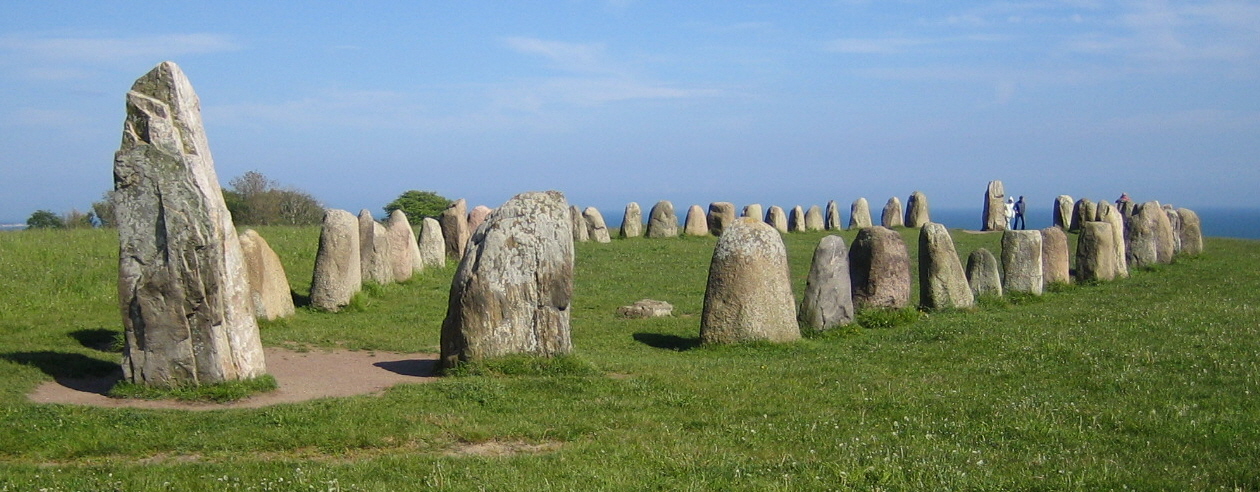

| Visitors Now: | |
| Total Visits: | |
| Total Stories: |

| Story Views | |
| Now: | |
| Last Hour: | |
| Last 24 Hours: | |
| Total: | |
A Swedish Stonehenge

Credit: Användare:Jorchr
The carbon-14 dating system for organic remains has provided seven results at the site. One indicates that the material is around 5,500 years old whereas the remaining six indicate a date about 1,400 years ago. The latter is considered to be the most likely time for Ales Stenar to have been created. That would place its creation towards the end of the Nordic Iron Age
This aerial view shows why Ales stenar is often referred to as a stone ship
Credit: Swedish National Heritage Board
In 1989, during the first archaeological excavations performed in order to scientifically investigate and date the monument, archaeologists found a decorated clay pot with burned human bones inside the ship setting. The bones are thought to come from a pyre and to have been placed in the pot at a later date. The pot’s contents varied in age; some material was from 330-540 CE while a piece of charred food crust also found inside was determined to be from 540-650 CE. The archaeologists working on the project also found birch charcoal remains from 540-650 CE underneath an undisturbed boulder.

According to the Swedish National Heritage Board, carbon-14 dating of the organic material from the site indicates that six of the samples are from around 600 CE, while one sample is from ca. 3500 BCE. The diverging sample came from soot-covered stones that are believed to be the remnants of an older hearth, found close to the ship setting. On the basis of these results, the Swedish National Heritage Board has set a suggested date of creation for Ales Stenar to 1,400 BP, which is the year 600 CE.
In the 1970 Hasse Alfredson proposed a hypothesis that Ales stenar could have certain astronomical functions. With a common magnetic compas he established that the ship’s mid-line pointed towards the point of the horizon where the sun could be seen going up during both the summer and winter solstice. Göran Lind did measurements that gave further ground to this astroarcheological theory. Astronomer Curt Roslund proposed a theory that the ship’s long sides are constructed as parabolas that would allow one to measure the days left towards both solstices. The new visitor signs placed before the path to Ales stenar now provide empirical observations as to the possible astronomical function of the monument. There is continuous debate about the validity of these astroarchaeological assumptions.
2012-10-23 00:44:41
Source: http://nanopatentsandinnovations.blogspot.com/2012/10/a-swedish-stonehenge.html
Source:



